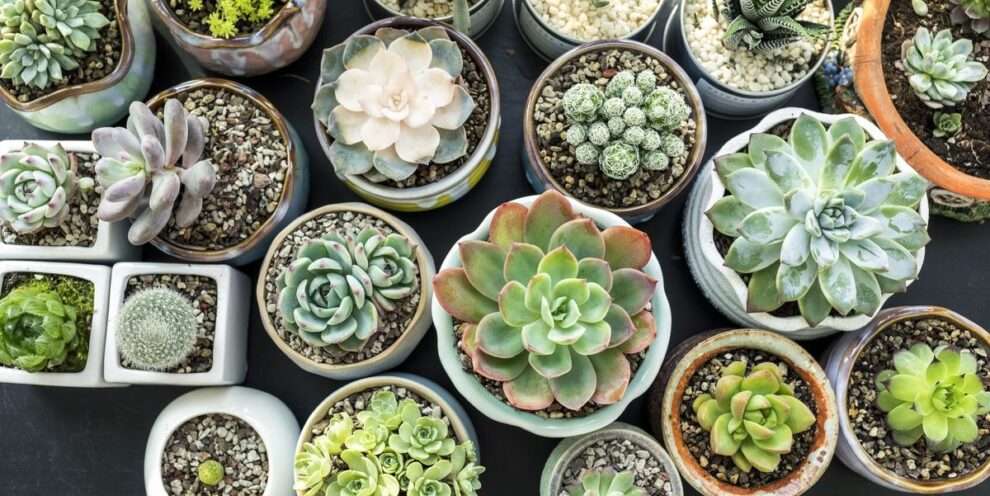
Air plants, also known as Tillandsia, have gained popularity in recent years due to their unique and fascinating characteristics. These plants are unlike any other, as they do not require soil to grow and thrive. Instead, they absorb water and nutrients through their leaves, making them a low-maintenance and versatile option for indoor gardening. In this article, we will explore the world of air plants, discussing their growth habits, care requirements, and the various types available.
What are Air Plants and How Do They Grow?
Air plants are a type of epiphyte, which means they grow on other plants or objects without harming them. They belong to the Bromeliad family and are native to the forests, mountains, and deserts of Central and South America. Unlike traditional plants that rely on soil for nutrients, air plants have specialized structures called trichomes on their leaves that allow them to absorb water and nutrients from the air.
There are over 650 different species of air plants, each with its own unique characteristics and growth habits. Some air plants have long, thin leaves that curl or twist, while others have broad, flat leaves. Some species produce vibrant flowers, while others have a more subtle beauty. Despite their differences, all air plants share the ability to survive without soil and adapt to a variety of environments.
The Similarities and Differences between Air Plants and Succulents
While air plants may share some similarities with succulents, such as their ability to tolerate dry conditions, there are also significant differences between the two plant families. Succulents store water in their leaves or stems, allowing them to survive in arid environments with little rainfall. Air plants, on the other hand, do not store water in the same way and rely on absorbing moisture from the air.
In terms of care and maintenance, succulents generally require more watering than air plants. Succulents need well-draining soil and should be watered when the soil is completely dry. Air plants, on the other hand, should be misted or soaked in water once or twice a week, depending on the humidity levels in your home. Overwatering can be detrimental to both succulents and air plants, but air plants are more forgiving and can tolerate occasional neglect.
The Anatomy of Air Plants: Understanding Their Unique Features
To understand how air plants grow and thrive without soil, it is important to understand their anatomy. Air plants have specialized structures called trichomes on their leaves, which are small scales or hairs that help them absorb water and nutrients from the air. These trichomes also give air plants their unique appearance, as they can be fuzzy, silvery, or even colorful.
In addition to their trichomes, air plants have a root system that is primarily used for anchoring themselves to their host plant or object. These roots are not used for absorbing water or nutrients like traditional plant roots. Instead, air plants rely on their leaves to absorb moisture from the air and obtain nutrients from sources such as rainwater, dust, and decaying organic matter.
The Benefits of Growing Air Plants in Your Home or Office
There are numerous benefits to growing air plants in your home or office. Firstly, air plants are low-maintenance and require minimal care compared to other houseplants. They do not need to be potted in soil and can be placed in a variety of creative containers or displayed on decorative objects such as driftwood or rocks.
Air plants also have the ability to improve indoor air quality by filtering out toxins and releasing oxygen into the environment. They can help remove pollutants such as formaldehyde and benzene from the air, making them a great addition to any indoor space.
Furthermore, air plants can add a touch of natural beauty to your home decor. With their unique shapes, colors, and textures, air plants can be used to create stunning displays and arrangements. Whether you choose to hang them from the ceiling, place them on a windowsill, or incorporate them into a terrarium, air plants are sure to enhance the aesthetic appeal of any space.
The Different Types of Air Plants and Their Characteristics
There are several different types of air plants, each with its own unique characteristics and growth habits. Some of the most popular types include Tillandsia ionantha, Tillandsia xerographica, and Tillandsia capitata.
Tillandsia ionantha is one of the most common and widely available air plants. It has small, compact leaves that can range in color from green to red. This species produces vibrant flowers that can be purple, pink, or blue.
Tillandsia xerographica is a larger air plant with thick, silver-gray leaves that curl inward. It has a striking appearance and can grow up to 3 feet in diameter. This species is known for its long-lasting blooms, which can last for several months.
Tillandsia capitata is a unique air plant with round, bulbous leaves that form a rosette shape. It has a silvery-gray color and produces bright purple flowers when it blooms. This species is relatively easy to care for and can tolerate a wide range of conditions.
How to Care for Air Plants: Tips and Tricks for Keeping Them Healthy
Caring for air plants is relatively simple, but there are a few key factors to keep in mind to ensure their health and longevity. Firstly, air plants should be placed in a location with bright, indirect light. They should not be exposed to direct sunlight, as this can cause their leaves to burn.
In terms of watering, air plants should be misted or soaked in water once or twice a week. If you choose to mist your air plants, make sure to thoroughly wet the leaves, as this is where they absorb water and nutrients. If you prefer to soak your air plants, submerge them in a bowl of water for 20-30 minutes, then allow them to dry completely before returning them to their display.
It is also important to provide adequate air circulation for your air plants. They should be placed in a well-ventilated area to prevent the buildup of moisture, which can lead to rot or fungal infections. If you live in a particularly humid environment, you may need to adjust your watering schedule accordingly.
The Best Ways to Display Air Plants: Creative Ideas for Your Home Decor
One of the most appealing aspects of air plants is their versatility when it comes to display options. There are countless creative ways to incorporate air plants into your home decor, allowing you to showcase their beauty and uniqueness.
One popular option is to hang air plants from the ceiling or walls using decorative hooks or macrame hangers. This creates a stunning visual display and allows the air plants to take center stage in any room. You can also place air plants on shelves, windowsills, or mantels, either individually or in groups.
Another creative idea is to incorporate air plants into terrariums or glass containers. This allows you to create a miniature ecosystem for your air plants, complete with rocks, moss, and other decorative elements. Terrariums can be displayed on tabletops or hung from the ceiling, adding a touch of natural beauty to any space.
Air Plants in the Wild: Exploring Their Natural Habitats
While air plants are commonly found in homes and gardens around the world, they also have natural habitats in the wild. In their native environments of Central and South America, air plants can be found growing on trees, rocks, and even telephone wires.
Air plants have adapted to survive in a variety of conditions, from the humid rainforests to the arid deserts. They have developed unique strategies for obtaining water and nutrients, such as capturing moisture from fog or absorbing nutrients from decaying organic matter.
In the wild, air plants play an important role in their ecosystems by providing habitat and food for a variety of animals, including insects, birds, and small mammals. They also help to stabilize soil and prevent erosion, making them an essential part of the natural environment.
Conclusion: Air Plants and Succulents – Two Unique Plant Families with Their Own Charm.
In conclusion, air plants are a fascinating and unique type of plant that have gained popularity in recent years. Their ability to grow without soil and their low-maintenance care requirements make them a versatile option for indoor gardening. Air plants come in a variety of shapes, colors, and sizes, allowing you to create stunning displays and arrangements in your home or office.
While air plants share some similarities with succulents, such as their ability to tolerate dry conditions, there are also significant differences between the two plant families. Air plants rely on absorbing moisture from the air, while succulents store water in their leaves or stems. The care and maintenance requirements for air plants are also different from succulents, with air plants requiring less watering and being more forgiving of neglect.
In conclusion, air plants are a beautiful and unique addition to any indoor space. Their ability to improve air quality, their low-maintenance care requirements, and their versatility in display options make them a popular choice among plant enthusiasts. Whether you choose to hang them from the ceiling, place them on a windowsill, or incorporate them into a terrarium, air plants are sure to bring a touch of natural beauty to your home or office.
If you’re interested in learning more about air plants and their relationship to succulents, check out this informative article on GirlsGist.com: “Air Plants vs. Succulents: Understanding the Similarities and Differences.” This article explores the unique characteristics of air plants and how they compare to traditional succulents. Discover the various types of air plants, their care requirements, and how they can be incorporated into your indoor or outdoor garden. Gain a deeper understanding of these fascinating plants and enhance your knowledge of succulent gardening. Read more

















Add Comment